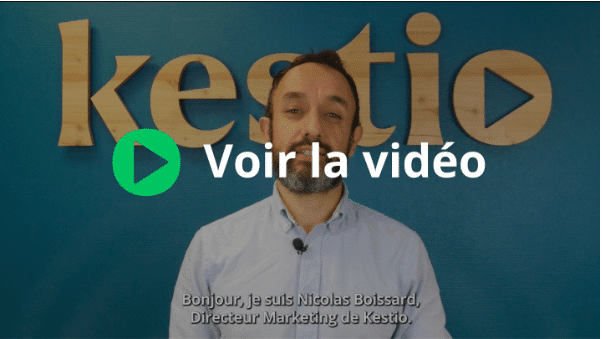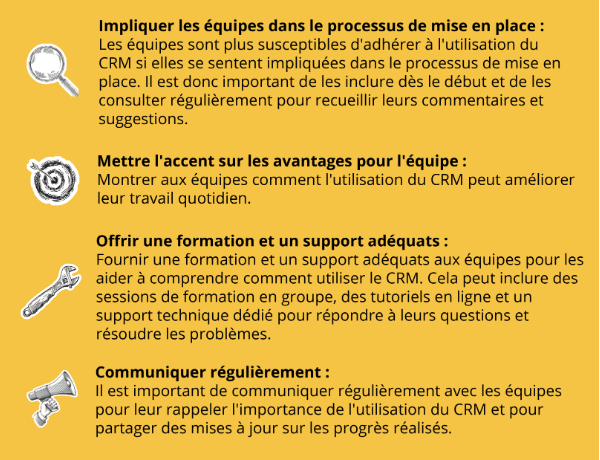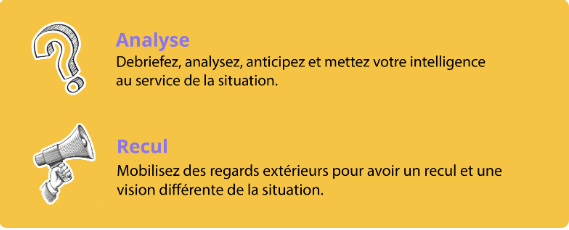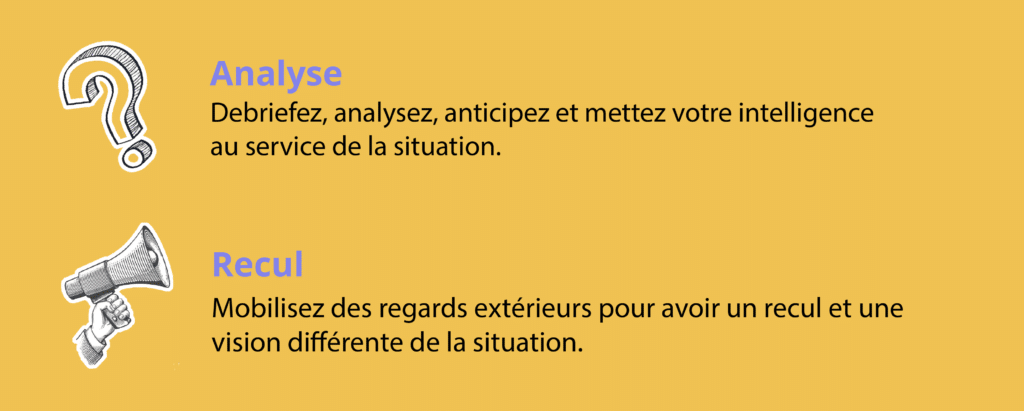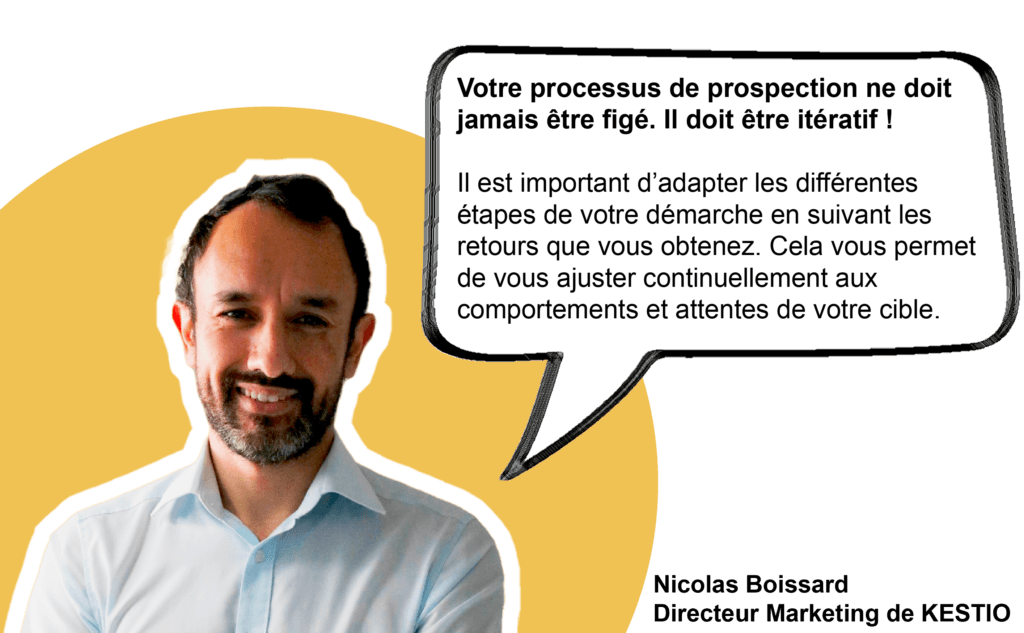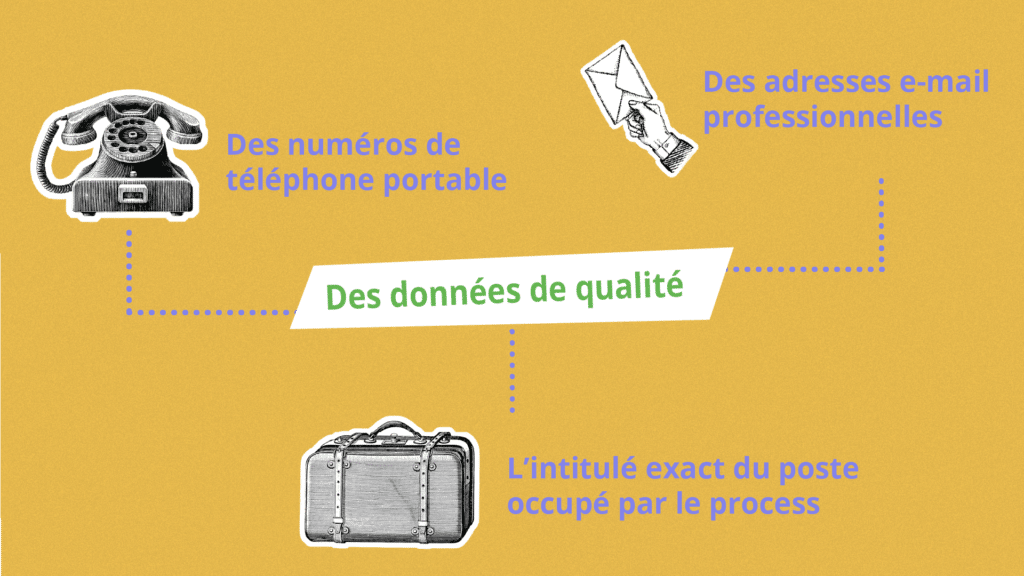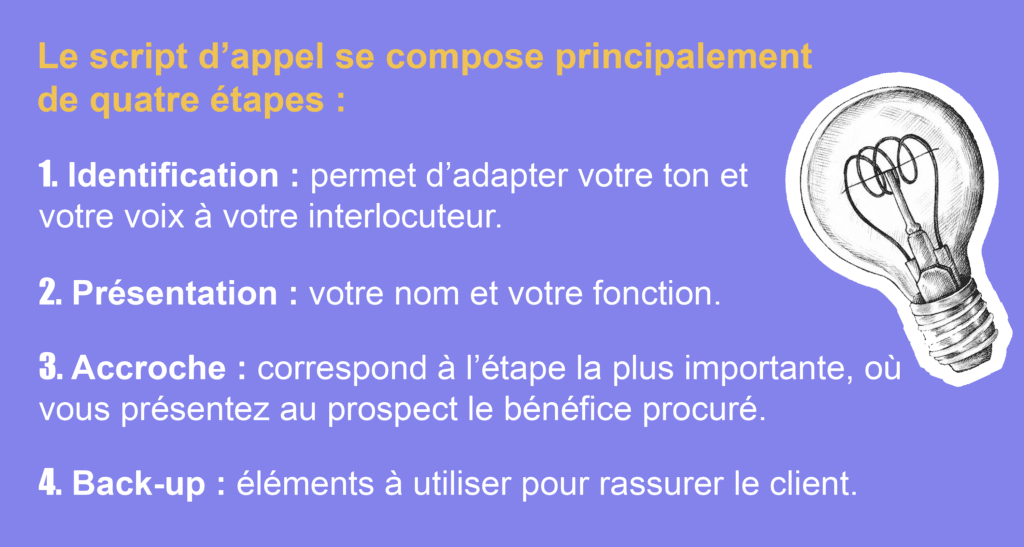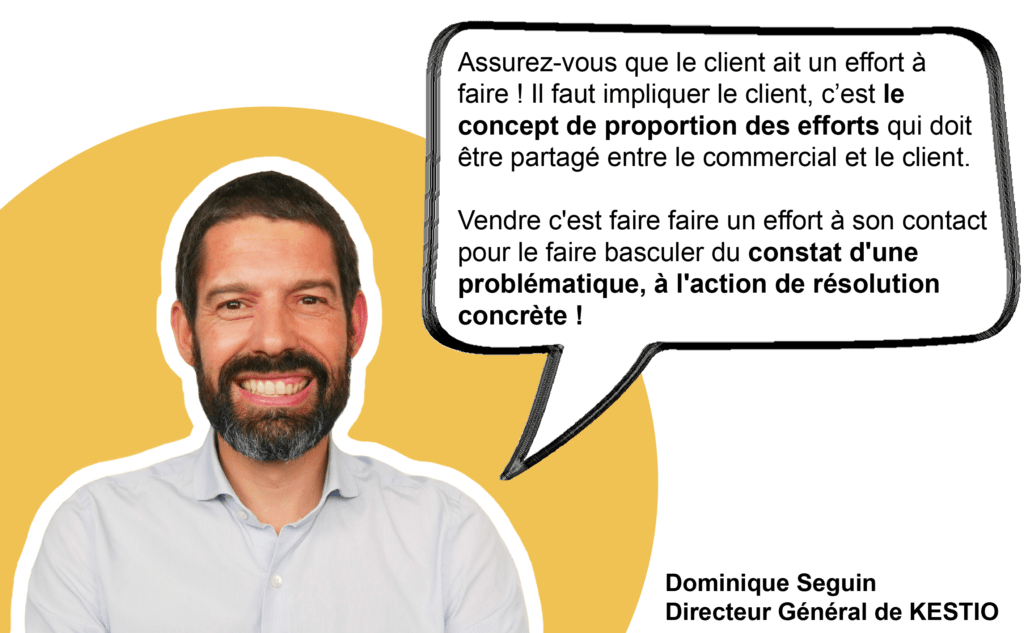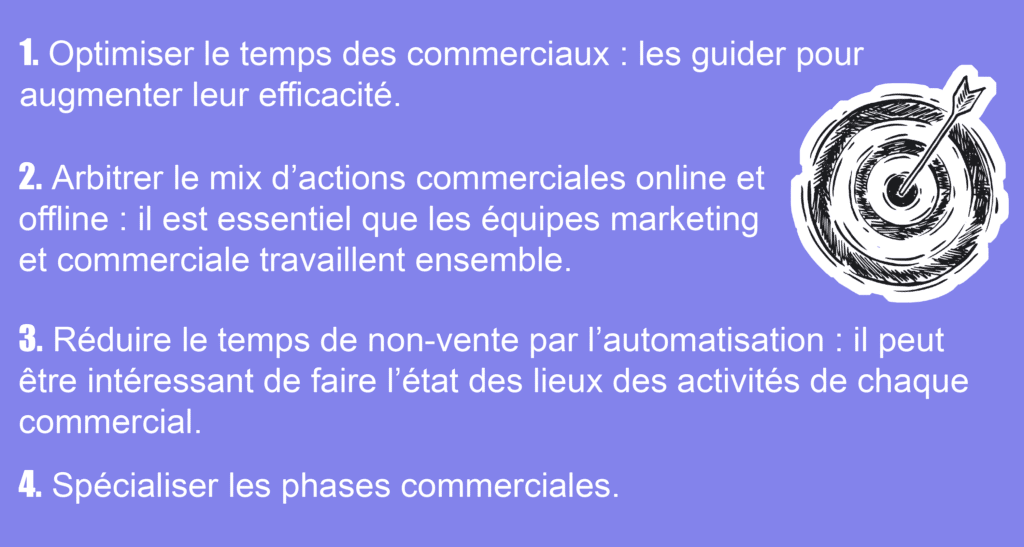Le “Smarketing”, vous connaissez ?
Ce terme, né de la contraction des mots « Sales » et « Marketing », désigne l’équilibre et la collaboration autour d’objectifs communs entre les services commercial et marketing d’une entreprise.
Mais lorsque ces deux départements ne sont plus en accord, c’est la productivité de toute l’entreprise qui en pâtit.
Selon une étude de Forrester Research, les entreprises qui ont des équipes marketing et commerciales non alignées subissent une perte de revenus annuels d’environ 10%*.
Comment alors quitter une logique de silos afin de créer une véritable synergie entre commercial et marketing ?
Nous vous livrons aujourd’hui nos 4 facteurs de réussite !
*Marketing Enablement Improves Business Outcomes — Show Me The Value, Forrester Research, 2022
CLÉ N°1 - Utilisez un CRM
En utilisant un CRM, les équipes peuvent suivre en temps réel toutes les interactions avec les clients et les prospects, ce qui permet de mieux comprendre leurs besoins et leurs préférences.
Cette compréhension plus fine des clients et prospects permet aux équipes marketing et commerciale de mieux ajuster leur stratégie en temps réel, en fonction des résultats obtenus.
En outre, grâce au suivi des résultats de chaque action marketing, il est possible d’associer un ROI à chacune d’entre elles, ce qui est essentiel pour mesurer l’efficacité de chaque campagne.

Meilleure compréhension
L’utilisation d’un CRM est également un moyen efficace de renforcer la collaboration entre les équipes marketing et commerciale.
En partageant des informations sur les clients et les prospects, les équipes peuvent mieux comprendre les besoins et les préférences des prospects, ce qui leur permet de mieux les conseiller et de proposer des solutions adaptées à leurs besoins.

Opportunités supplémentaires
En travaillant ensemble, les équipes peuvent ainsi améliorer la qualité du service offert aux clients et prospects, renforcer la fidélisation et augmenter les ventes.
Cette relation de confiance entre les clients et l’entreprise permet également de générer des opportunités d’affaires supplémentaires et de renforcer la notoriété de l’entreprise.
Si vous souhaitez qu’un expert vous aide à optimiser l’usage de votre CRM par vos équipes, cliquez sur le bouton ci-dessous.
Objectif de cet échange, avoir les clés en mains pour entamer un changement.
CLÉ N°2 - Surveillez vos metrics
Pour assurer une collaboration efficace entre les équipes marketing et commerciale, il est essentiel d’avoir des metrics claires et précises pour mesurer les résultats de chaque action.
En effet, ces metrics permettent de mieux comprendre l’impact des actions marketing sur les ventes et de mieux ajuster les stratégies en fonction des résultats obtenus.
Du côté du marketing, il est important de suivre le nombre de leads nécessaires pour atteindre les objectifs de chiffre d’affaires de l’entreprise.
Cette metric permet de mieux comprendre l’efficacité des actions marketing et d’ajuster les stratégies en fonction des résultats obtenus.
Du côté des ventes, il est important de mesurer la réactivité et la qualité du suivi des leads et des prises de rendez-vous
Cette metric permet de mesurer la qualité du suivi des leads et d’identifier les points à améliorer pour mieux répondre aux besoins des clients.
Aussi, il est important de suivre le taux de conversion des leads en clients pour mesurer l’efficacité de chaque étape du processus de vente.
Par exemple, si l’entreprise génère 100 leads par mois mais ne parvient à convertir que 10% d’entre eux en clients, il est important de comprendre pourquoi les autres leads n’ont pas été convertis en clients. Cette metric permet de mieux comprendre les points à améliorer pour mieux convertir les leads en clients.
Enfin, il est important de mesurer le coût d’acquisition de chaque client pour mieux comprendre l’efficacité des actions marketing et commerciales.
Par exemple, si l’entreprise a dépensé 10 000 euros en publicité pour générer 100 leads et a finalement acquis 5 nouveaux clients, le coût d’acquisition de chaque client est de 2 000 euros.
Cette metric permet de mieux comprendre la rentabilité de chaque action marketing et commerciale et d’ajuster les stratégies en conséquence.
Vous ne savez pas quels metrics suivre ? Commencez par travailler votre Business Flow pour identifier le nombre de leads nécessaires à l’atteinte de vos objectifs.
Cliquez sur le bouton ci-dessous pour télécharger notre trame de construction de Business Flow.
CLÉ N°3 - Réunissez vos équipes
Une fois ces metrics définies, communiquez-les régulièrement auprès de vos équipes marketing et commerciale pour qu’elles soient ancrées dans leur quotidien.
Pour cela, les réunions d’équipe sont un excellent levier !
Réunir vos deux services permet effectivement de les aligner sur une stratégie commune concernant :
- Vos clients
- Vos offres
- Vos campagnes
- Vos résultats
Pour pouvoir proposer des contenus attractifs répondant aux besoins de vos prospects, vos marketeurs ont besoin des retours d’expérience et de l’argumentaire de vente de vos commerciaux. Et vos commerciaux ont besoin d’être au fait de toutes les campagnes marketing en cours pour assurer la fluidité du cycle d’achat de vos clients.
Organisez ainsi des moments de rencontre réguliers entre vos équipes commerciale et marketing pour favoriser leur collaboration :
- Réunions de lancement de semaine et de revue des objectifs et priorités 🎯
- Ateliers de brainstorming où vos deux équipes peuvent échanger leurs idées et répondre à une problématique commune 🧠
- Formations croisées pour faire monter en compétences vos collaborateurs sur des expertises complémentaires 📚
- Activités de team building pour renforcer la cohésion d’équipe 🤝
Les séminaires d’entreprise permettent de regrouper toutes ces activités nécessaires à la collaboration de vos équipes !
Ce sont des moments forts pour la vie de votre société car ils renforcent votre culture d’entreprise et le sentiment d’appartenance de vos collaborateurs.






